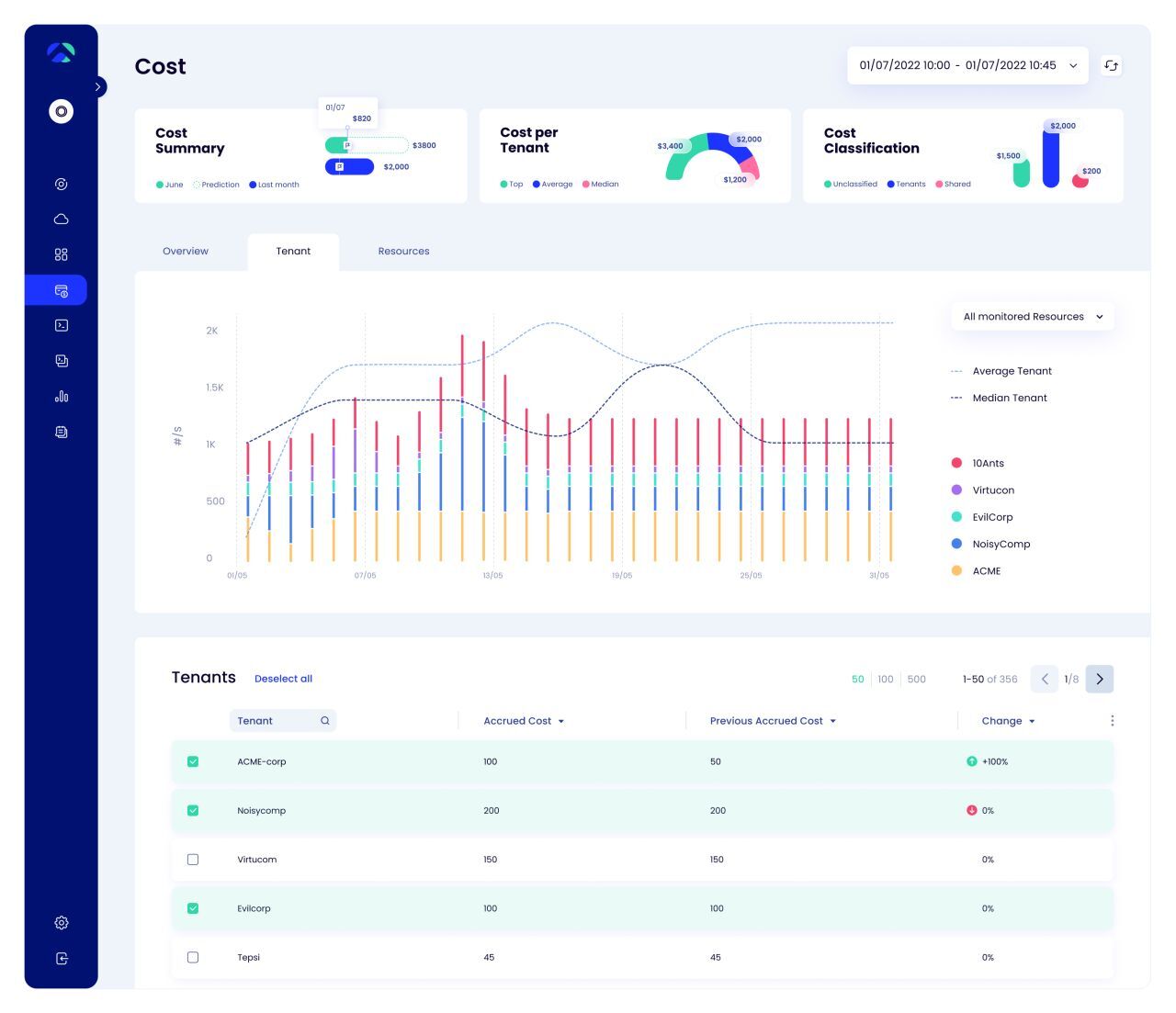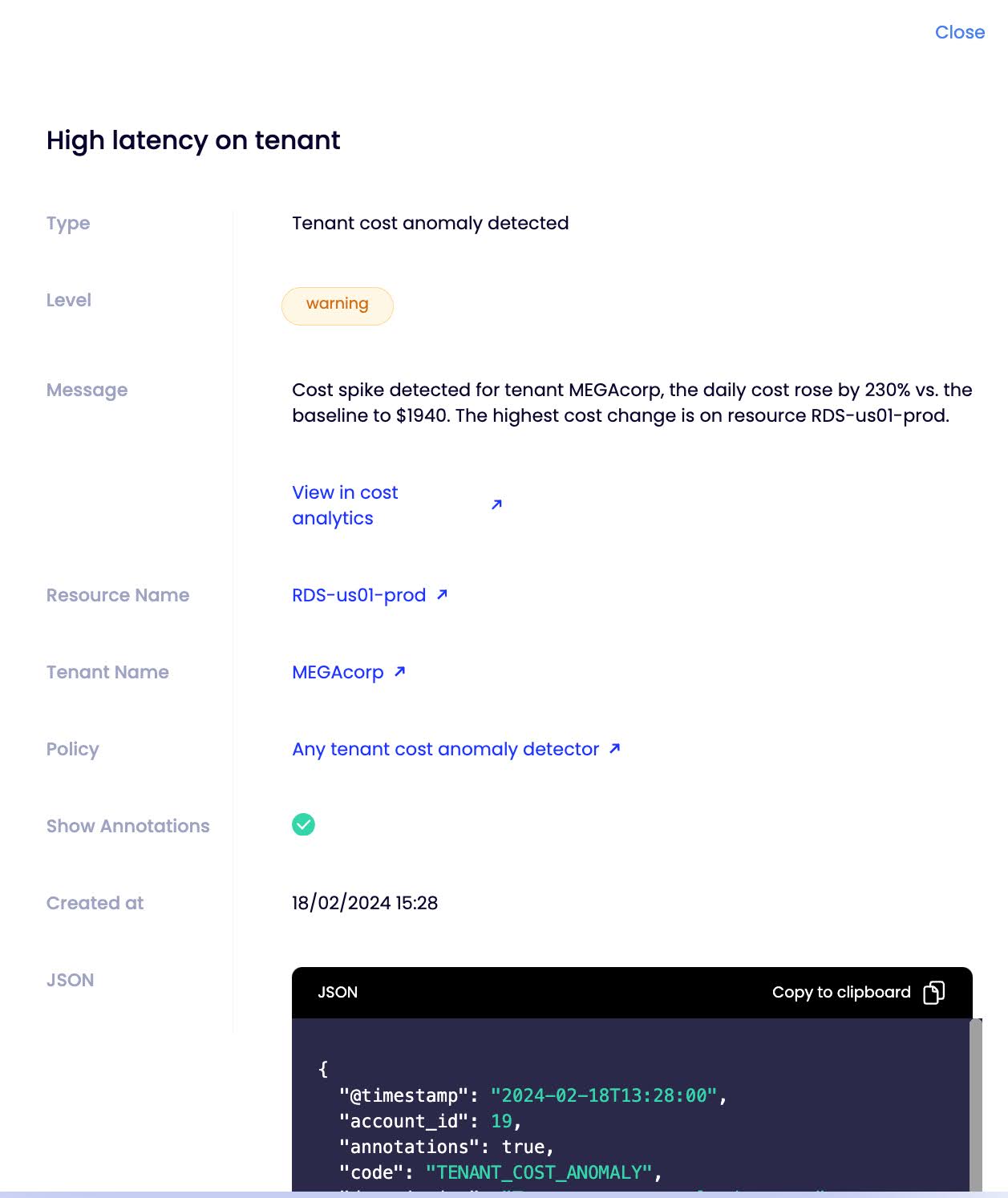Data-Driven SaaS Profitability: Unlock Tenant-Level Cost Analytics

Sudden cloud bill spikes keeping you up at night? Struggling to pinpoint the root cause of cost overruns or justify pricing differences among your tenants? The problem lies in a lack of tenant-level cost visibility. Traditional observability tools leave you guessing, making it difficult to strategically target cost optimization projects and confidently meet budget targets.
The Cost Blindspot: Why You Need Tenant-Level Visibility
In the world of multi-tenant SaaS, generic cloud cost monitoring leaves you in a dangerous blind spot. Sure, you can see your overall AWS/GCP/Azure bill or database usage trends, but that doesn't tell you how these costs map to individual tenants. This lack of granular insight has serious consequences:
- Pricing Inaccuracies: Trying to set fair pricing tiers or adjust your model without understanding true tenant costs is a recipe for lost revenue. You risk undercharging heavy users and subsidizing their resource consumption or overcharging others who use fewer resources.
- The "Noisy Neighbor" Dilemma: A single tenant's excessive resource usage – whether it's a surge in traffic, unoptimized queries, or a background job gone wild – can degrade performance for everyone else and inflate your costs. Without tenant-level visibility, it's nearly impossible to pinpoint the culprit.
- Missed Optimization Opportunities: When you don't know which tenants or service components drive the most expense, you can't strategically target cost reduction efforts. Over-provisioning, architectural inefficiencies, and unmetered services continue to drain your bottom line.
Illusion of Control: The Fallacy of Averaging & Approximation
In the absence of true tenant-level cost visibility, many SaaS providers resort to averaging or crude estimations. This dangerous fallacy can lead to disastrous consequences:
- Masking "Noisy Neighbors": Averaging hides the fact that a few resource-hungry tenants might be inflating costs for everyone. You become unable to address the root cause of the problem.
- Inaccurate Pricing & Missed Opportunities: Oversimplified cost approximations prevent you from charging power users fairly, or worse, you might unknowingly subsidize them at a loss. This stifles revenue growth potential.
- Blind Optimization: Attempts to reduce costs become guesswork when you don't know which tenants or services drive them. This leads to inefficient over-provisioning or under-provisioning, potentially harming the customer experience.
Why Static Calculations Fail
Even if you attempt to manually track tenant-level costs, these numbers quickly become outdated in a dynamic SaaS environment. Tenant behaviors evolve, you roll out new features, and resource requirements change constantly. Static or ad-hoc calculations can't keep up, leaving you vulnerable to cost-related surprises.
True SaaS success demands a real-time, deeply granular understanding of how each tenant impacts your bottom line.
In the next section, we'll uncover how SuperTenant provides the granular multi-tenant cost analytics you need to take control and drive sustainable SaaS growth.
How SuperTenant Illuminates Tenant Costs
Imagine a world where you can see, in real-time, the precise cost breakdown for each tenant across your entire tech stack. This level of clarity is the key to:
- Data-Driven Pricing: Set prices confidently, avoid leaving money on the table, and ensure margins align with actual resource consumption.
- Proactive Troubleshooting: Pinpoint cost anomalies before they cause widespread problems, safeguarding customer experience and your bottom line.
- Intelligent Capacity Planning: Forecast resource needs accurately based on true tenant usage patterns, eliminating wasteful over-provisioning.
Enter SuperTenant cost analytics
At a glance, SuperTenant collects precise tenant-aware metrics, where each application request is attributed to a tenant (no sampling) and as a result you can easily track performance,SLO and anomaly detection on a tenant level.
This granular tenant inteligence is matched with the cloud services billing information to produce high accuracy per tenant cost metrics.

Tenant cost information is constantly updated and reflects realtime cost state per tenant AND per service.
SuperTenant provides invaluable insights to burning cost questions:
- “What is the cost impact of the new release/feature?”
- “Who are the customers with highest cost in free-tier?”
- “Do we have customers in free tier above our max cost target for the tier?”
- “Which customer(s) drove the cost-spike in our cloud bill?”
Fast detection of runaway cost anomalies
In addition supertenant constantly tracks per tenant cost trajectories and can alert on cost anomalies per tenant.
One such example we recently encountered with our customer is a case where one of their tenants built an automation that was using excessive deep-scan of historical data causing a cost spike - reaching a typical monthly cost within 1 hour.

Following this cost alert , they were able to quickly pin-point the root cause, and stop the runaway cost - Saving over $50,000
Break Free from the Cost Blindspot and Achieve SaaS Cost Optimization
Operating a multi-tenant SaaS without tenant-level cost visibility limits your ability to optimize costs and maximize profitability. By gaining granular insights, you can:
- Empower Data-Driven Decision Making: Make informed choices about pricing, resource allocation, and troubleshooting, all based on accurate, real-time cost data tied directly to tenants.
- Prevent Cost Catastrophes: Proactively address cost runaway of specific tenants and features within your multi-tenant environment, safeguarding your bottom line.
- Maximize Profitability: Achieve true SaaS cost optimization by aligning services with usage, pinpointing cost-saving opportunities, and potentially uncovering new revenue streams.
If you want to be on a fast path to SaaS cost optimization - try out our solution. It takes minutes to integrate and does not require changes to your app.
Get in touch with our experts and book a demo.